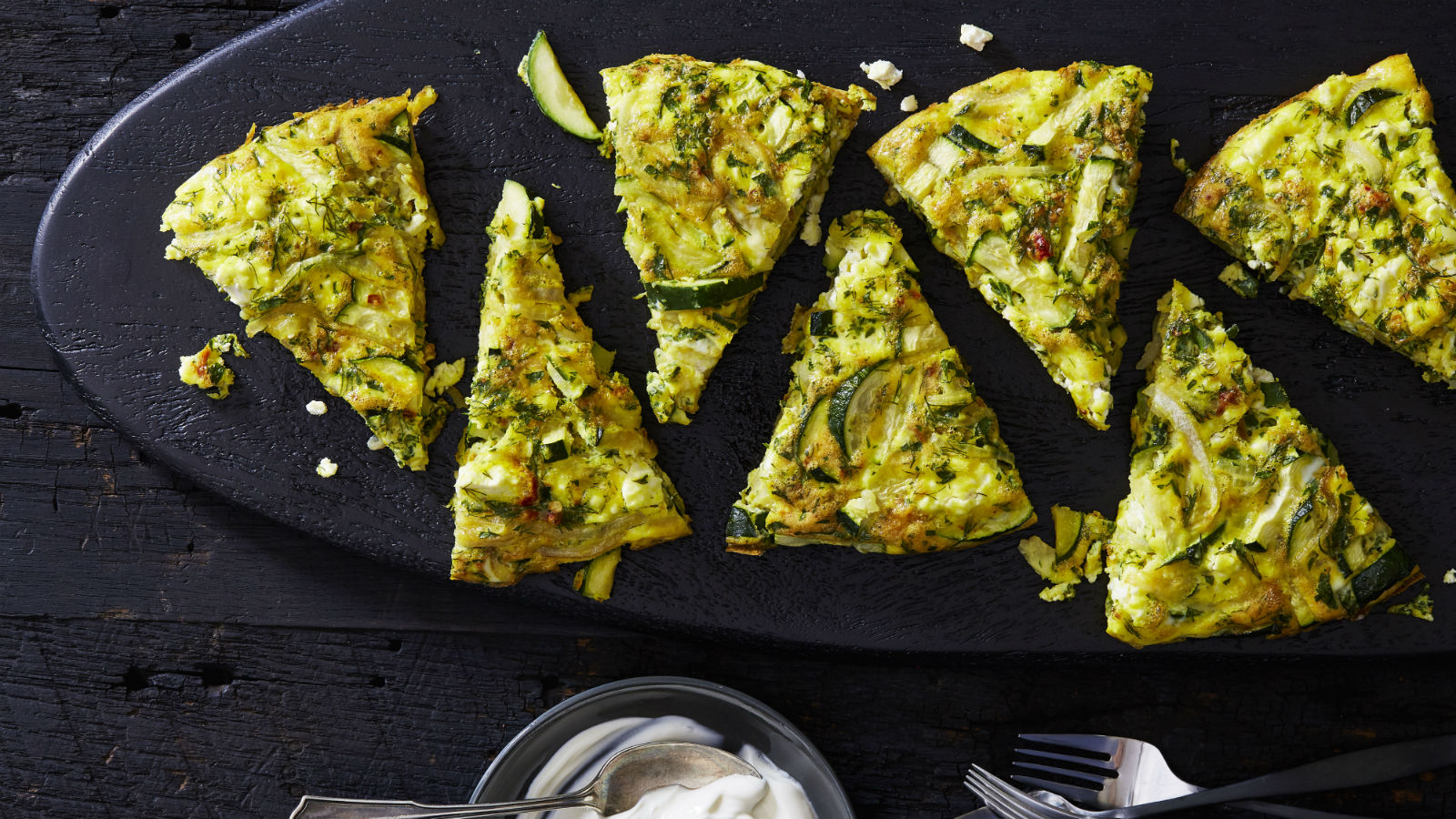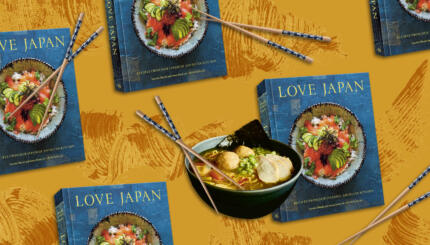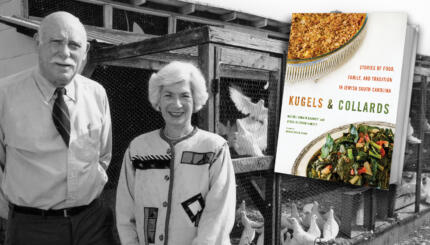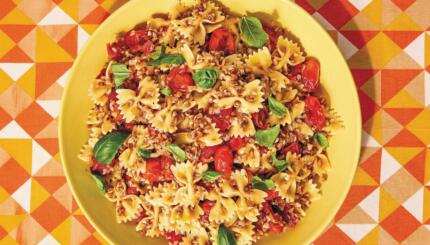Photo credit Linda Pugliese.
Do you love any excuse to throw a party? Maybe you feel intimidated to host friends for a full, sit-down dinner? Or maybe you just love beautiful, interesting cookbooks (like me). Any which way, you are going to adore Leah Koenig’s book, The Little Book of Jewish Appetizers.
Instead of a whopping, mountain-size cookbook with recipe after recipe after recipe, this pint-sized volume of small bites packs a mighty punch with select Jewish-inspired appetizers sure to wow a crowd, big or small: potato and red onion knishes, Persian zucchini and herb frittata (pictured above), smoked trout canapes and Moroccan orange and black olive salad.
I had the privilege to ask Leah a few questions about the book, and how she likes to entertain. And as with this volume, Leah opts for quality over quantity. Don’t forget to check out her stunning recipe for Moroccan orange salad with black olives too, and then get ready to entertain.
What was the inspiration for the book?
In some ways, my inspiration is the same for every book or article I write. Jewish cuisine is, at its heart, a global cuisine, and I would happily travel down a million different rabbit holes in search of a less-explored corner of Jewish cooking, or a recipe that I haven’t heard of before. I’ve been writing about Jewish cuisine for almost a decade and feel like I’ve only scratched the surface of what’s out there.
But focusing on this cookbook, it’s actually the first in a three-book series that will explore three different aspects of Jewish cooking. Each book is tiny — just 25 recipes! — so they have to be tightly curated to offer the best of their category. The second book will focus on holiday main dishes and the third will cover sweet and savory baking. But I really wanted to start at the beginning with the forspheis (Yiddish for “before food”) and mezze dishes that traditionally begin Jewish meals. These are the dishes— dips and spreads, salads, fritters, and other tiny noshes— that are so delicious, we inevitably fill up on them before the main course starts. I wanted to pay homage to the role that appetizers play in Jewish cuisine as a whole.
What’s your favorite nosh to serve?
I know it’s a bit cliched at this point, but I am totally not over the “toast” trend yet. So for me, crostini, which are essentially delicious things piled onto toast, are always a favorite nosh. This first Little Book has a recipe for borscht crostini that I love. It takes all the flavors of traditional borscht — roasted beets and carrots, pickled onion, cultured dairy (in this case a slick of creme fraiche instead of the more commonly used sour cream), and a chopped up mix of dill, garlic, and lemon zest— and pairs them on toasted bread. The crostini are tangy and sweet, crunchy with creamy notes, and both flavorful and vibrant to look at. Of all the “traditional meets modern” Jewish recipes I have developed over the years, I think they’re my favorite.
What’s your biggest pet peeve about entertaining?
Taking things too seriously! Don’t get me wrong, I love to plan and organize, and I enjoy thinking about little touches or special dishes that will make my guests happy. But whether I’m planning a dinner party for six or a cocktail party for 20, I always try to keep a little humor in the mix. There’s no bigger buzzkill than arriving to a party where the host is micromanaging and fretting over every aspect of the experience. I prep ahead wherever possible and make sure to have a glass of wine already in my hand when guests arrive!
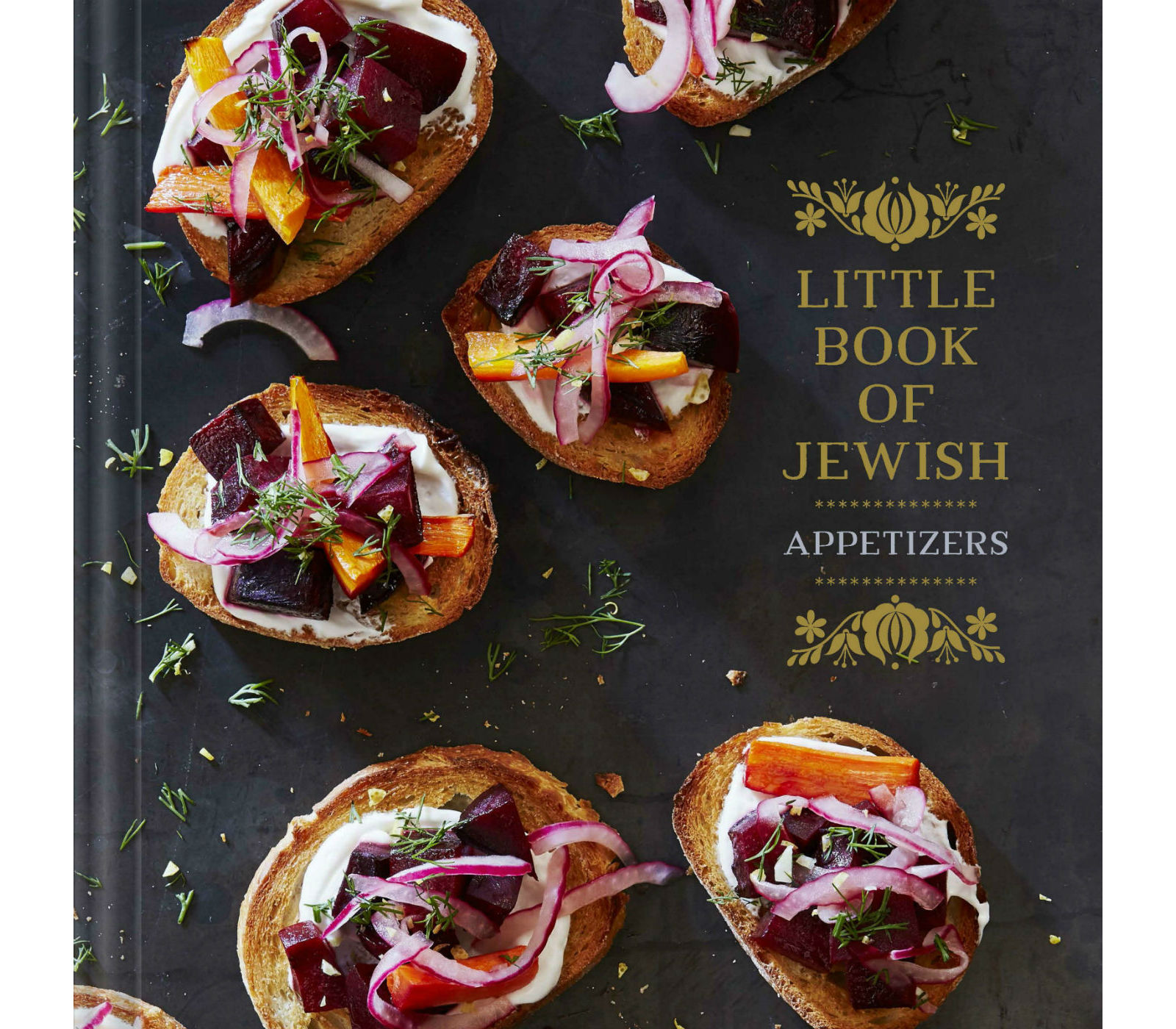
In the book you suggest several spread pairings – which is your favorite?
The Everything Spice Rye Crackers, which are topped with a mix of poppy seeds, sesame seeds and dehydrated onion and garlic flakes, pair perfectly with the more Ashkenazi-inspired spreads like the Chopped Egg and Caramelized Onion or the Vegetarian Chopped Liver with Shallots. And the Za’atar Pita Chips, which are so simple to make and so satisfying to eat, are wonderful swiped through Middle Eastern spreads like the Muhammara (Red Pepper, Walnut and Pomegranate Spread), the Perfect Tzatziki or Smoky Sweet Potato Hummus. But really, both of those crackers are versatile enough that they’d taste great topped with just about anything.
How do you make sure you have enough food?
It’s funny, I actually don’t think I was born with the typical “Jewish mom gene” that compels me to cook way more than is needed for a particular situation. As someone who thinks a lot about sustainability and food waste— including all the prepared food that gets thrown away because we can’t eat it in time before it goes bad— I’d rather have “just enough” food. I know it sounds counterintuitive, but when I host a party and I almost run out of things, it actually makes me happy. That way, I know I’ve made enough for everyone to be satisfied, but without the excess waste.
What kinds of dishes do you like when you need to prepare ahead?
When it comes to prepping appetizers and noshes ahead, dips can almost always be made in advance and held for a day or two. So can baked goods like the Mushroom Piroshki and Potato and Red Onion Knish, both of which can be refrigerated or frozen and then just need a quick minute of reheating in the oven before being served. With other dishes, like the Borscht Crostini, the various components (roasted beets and carrots, pickled onion etc.) can be prepped in advance, and then the crostini can be assembled as needed. I like to do as much as I can in advance and then save one or two really fresh dishes— like the Moroccan Orange and Black Olive Salad—- for the last minute. Getting early-arriving guests involved—chopping parsley for a garnish, or assembling crostini— is a great way to engage them, and get a little extra help!


